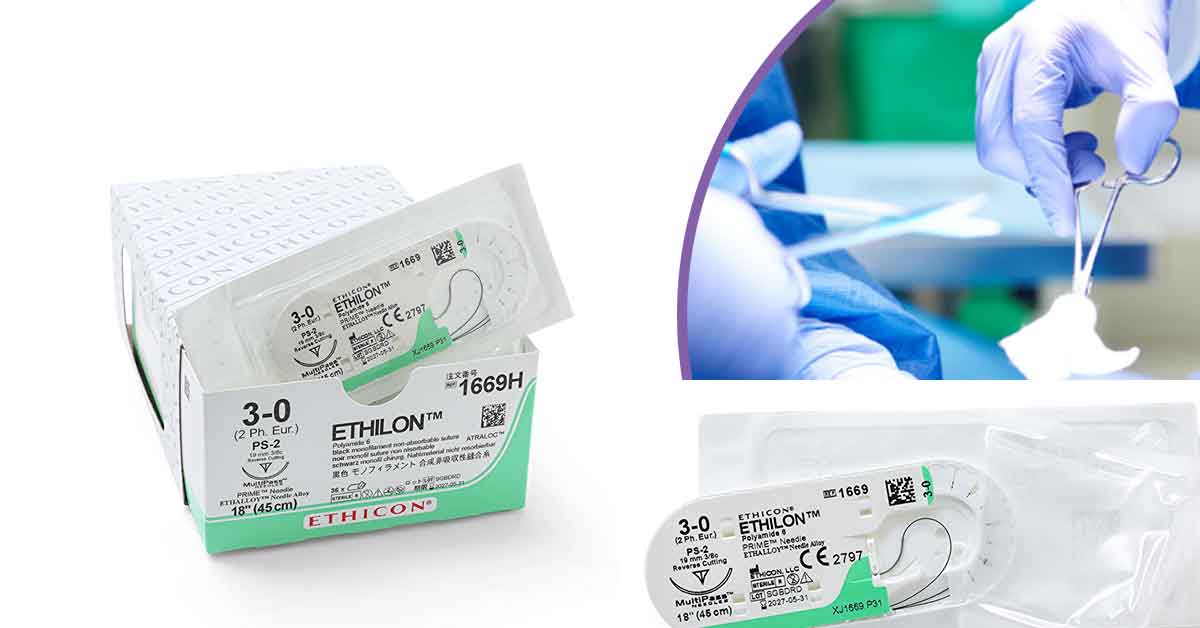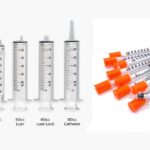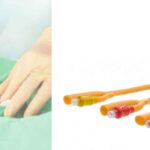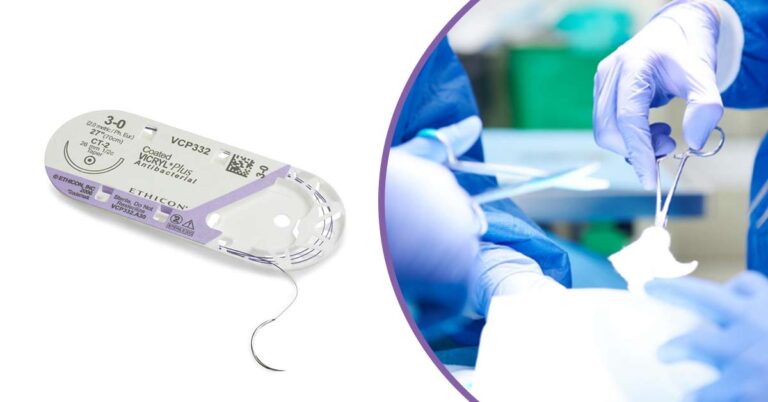Nylon suture also called polyamide suture, is a sterile synthetic non-absorbable suture, with high tensile strength. It can be microfilament (Ethilon, Dermlon, Daclon) or multifilament (Nuralon). It is easily pliable, smooth, and soft. Nylon gives excellent knot security and are easily removed without tissue resistance. They are also resistant to infection.
Nylon is composed of long-chain aliphatic polymers and are used to position and secure soft tissue in the oral cavity after oral surgery procedures. Nylon can be dyed in black, blue, green to increase visibility, or can be colorless.
Sutures can be absorbable or non-absorbable, synthetic or natural, monofilamant or multifilament. Absorbable sutures lose most of their tensile strength over weeks or months. They can come from natural or synthetic sources. Examples of absorbable sutures include Polyglactin 910 (Vicryl), Polydioxanone (PDS), and Poliglecaprone 25 (Monocryl).
Non-absorbable sutures are used for long term tissue closure like vessel anastomosis, permanently ligating internal tubular structures or vessels, to perform a second layer of bowel hand sawing anastomosis, hernia fascial defects closure.
Sutures can also be monofilament or multifilament. Monofilament sutures are single filaments with less surface areas than multifilament (braided or twisted suture). Monofilament sutures have higher memory and demands more care when handling. They pass through tissues easily and cause less inflammatory reactions.
Multifilament sutures are more pliable, holds knots more securely, have less memory, and is easier to handle. However, they cause more friction through tissues, and increase the risk of inflammation and infection.
Sizes of Nylon Sutures
Nylon sutures are available in USP size 2 to size 10-0 (Sizes: 10-0, 9-0, 8-0, 7-0, 6-0, 5-0, 4-0, 3-0, 2-0, 0, 1, 2). It is supplied in a box of one dozen sutures.
Nylon sutures can be non-needled or attached to standard stainless steel needles of different types and sizes. The needles are attached permanently to the suture.
- Nylon 2-0: skin closures, ligamentous or fibrous tissues.
- Nylon 6-0: delicate skin closures
- Nylon 5-0: versatile choice for fine tissue approximation.
How Nylon Suture Works?
Nylon suture is non-absorbable and does degrade or weaken by the action of enzyme in the tissues. It elicits minimal inflammatory reaction in the tissue, followed by gradually encapsulation of the suture by the fibrous connective tissue.
Though the suture is not absorbed, the thread mass diminishes by hydrolytic action in vivo (rupture of chemical links) losing approximately 20% of its tensile strength a year.
Since it is biologically inert, it is recommended for use in tissues where suture reaction may occur. As the suture does not adhere to tissues, it is also an effective pull-out suture.
Normally the suture is removed within the 30 days depending on the condition of the wound.
Indication
Nylon suture is exceptional for closing skin subcuticular layers.
It is used in general soft tissue closing and/or ligation. Also used for skin and plastic surgery, orthopedic, cardiovascular, neurological, ophthalmic and microsurgery.
Contraindications
Not recommended for attachment of artificial prostheses in cardiovascular surgery. May not be used for central nervous system and circulatory system.
As there is gradual loss of tensile strength in vivo after a prolonged stay, the suture should not be used where there is need for permanent retention of tensile strength, as in fixation of intraocular lenses or synthetic vascular grafts.
Not to be used in patients with allergies or sensitivities to the material of the suture.
Adverse Effects
Nylon suture may cause calculi formation in urinary and biliary tracts where there is prolonged contact with salt solutions in the urine and bile.
It may also cause inflammatory tissue reaction, pain, wound dehiscence, edema, and erythema at the site of the wound. As a foreign agent, it may increase an already existing infection.
The gradual loss of tensile strength over long time is also an issue
Warnings/Precautions
- Store at the temperature of 10°C-35°C, away from moisture and direct heat.
- Nylon suture are sterilized by ethylene oxide, do not re-sterilize or reuse. This may lead to contamination of the suture and cause infection or cross-infection and disease transmission from patient to patient. Re-sterilization, reuse or reprocessing may also cause the failure of the suture as the structural integrity of the device is compromised.
- Non-absorbable sutures like polyamide suture can increase the risk of wound dehiscence at the site of application. The surgeons should be familiar with the surgical procedures and the technique involved.
- Ensure the knot security by the standard surgical technique of flat and square ties with additional throws
- Avoid crushing or crimping damage from surgical instruments like forceps or needle holders.
- When using the needle, grasp the needle in an area of one third (1/3) to one half (1/2) of the distance from the attachment end to the sharp point.
- Do not reshape the needles, as it may lose strength and becomes less resistant to bending and breaking.
References
- https://www.ncbi.nlm.nih.gov/books/NBK539891/
- https://www.dolphinsutures.com/nylon-sutures/
- https://www.demetech.us/product/sutures/NylonMultifilament
- https://www.jnjmedtech.com/en-EMEA/product/ethilon-nylon-suture











